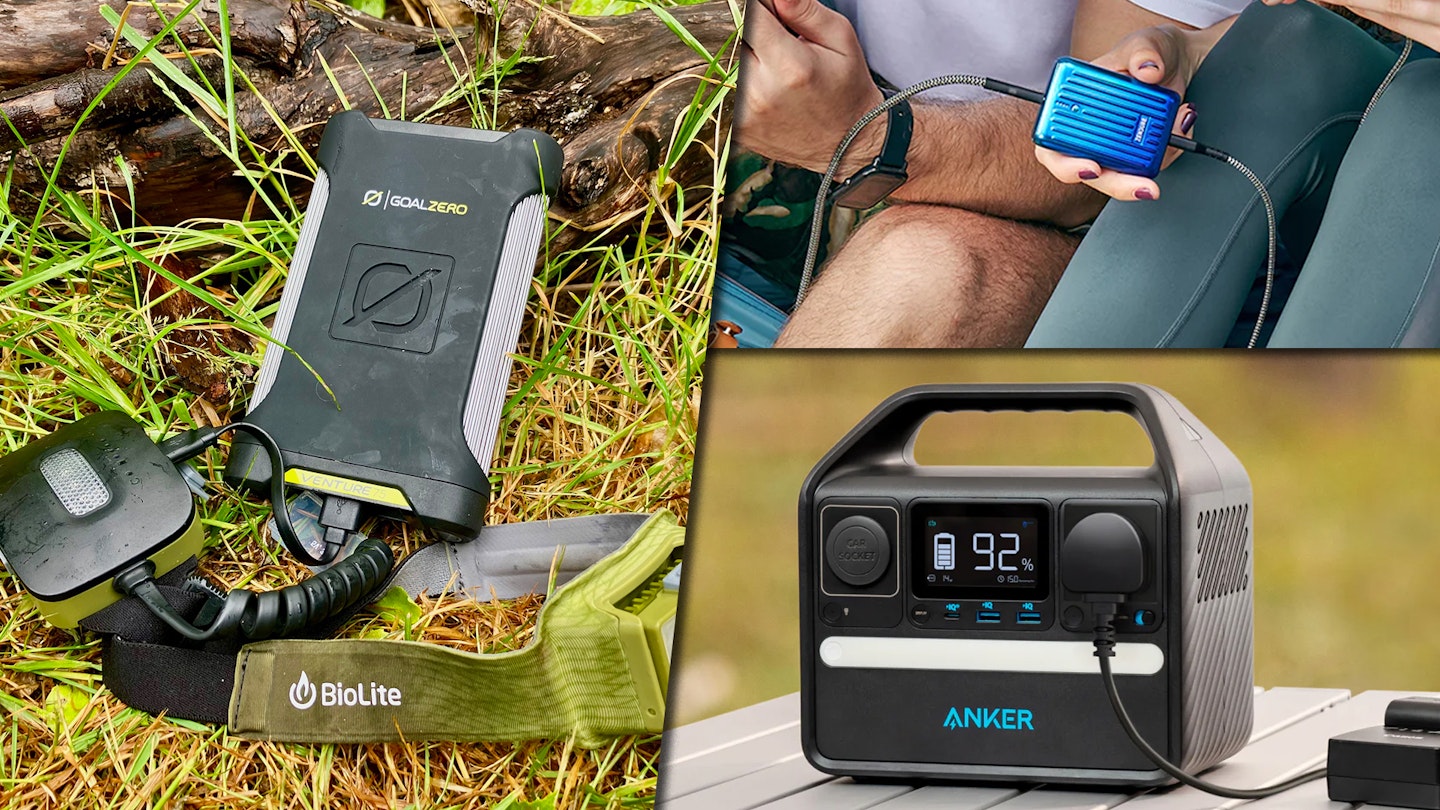Some old-fashioned hikers might roll their eyes and groan at the suggestion of bringing a power bank on a hike. They'll moan about something like outdoors supposedly being about getting away from modern life. But don’t take any notice of that because a power bank can be as much a necessity as it can be a luxury on a hike.
For example, you might have your OS maps downloaded on your phone and that’ll need to be recharged if you’re to save yourself from getting lost. A power bank can also recharge your headtorch and other modes of lighting. Additionally, there’s nothing wrong with wanting to listen to music on a device, or boot up some cool camping gadgets at the site! A good power bank can be the star of any family camping trip; we think it's well worth investing in the right one.
Here, we’re going to help you by recommending the best power bank options for outdoor endeavours. Your choice ultimately boils down to two options: a standard power bank protected by a dry bag, or a rugged power bank with a high IP rating. We've covered both – and thrown in a wildcard option for those who love a bit of luxury.
Our Shortlist
Goal Zero Venture 75 – Best in test
RUGD. Power Brick – Best value
Zendure Supermini – Best compact power bank
Anker 521 PowerHouse – Best power bank for camping
Biolite Charge 40 PD – Best power bank for ultralight hiking
The best power banks for hiking and camping in detail
Best in test
ON SALE

www.alpinetrek.co.uk
Description
The Venture 75 has a large battery capacity that is suitable for longer treks where you may need to recharge multiple devices, and perhaps more than once – four or five smartphone recharges, or about a dozen headtorch recharges. The inclusion of USB-C means the Venture 75 can charge and be charged quickly.
An IP67 rating means the Venture 75 is dust-tight and can be submerged in water at a depth of one metre for up to 30 minutes. It seems unlikely that will happen but it gives you very good peace of mind to know it will survive some rain or being dropped in a puddle.
It’s the largest power bank recommended here but it’s still reasonably compact, about the same size as a smartphone albeit a bit heavier. However, it does have a smaller sibling, the Venture 35, which is about half the weight and capacity of the Venture 75.
Pros
- Big capacity
- Reasonably compact
- IP67 rating
Cons
- Quite weighty
Best value
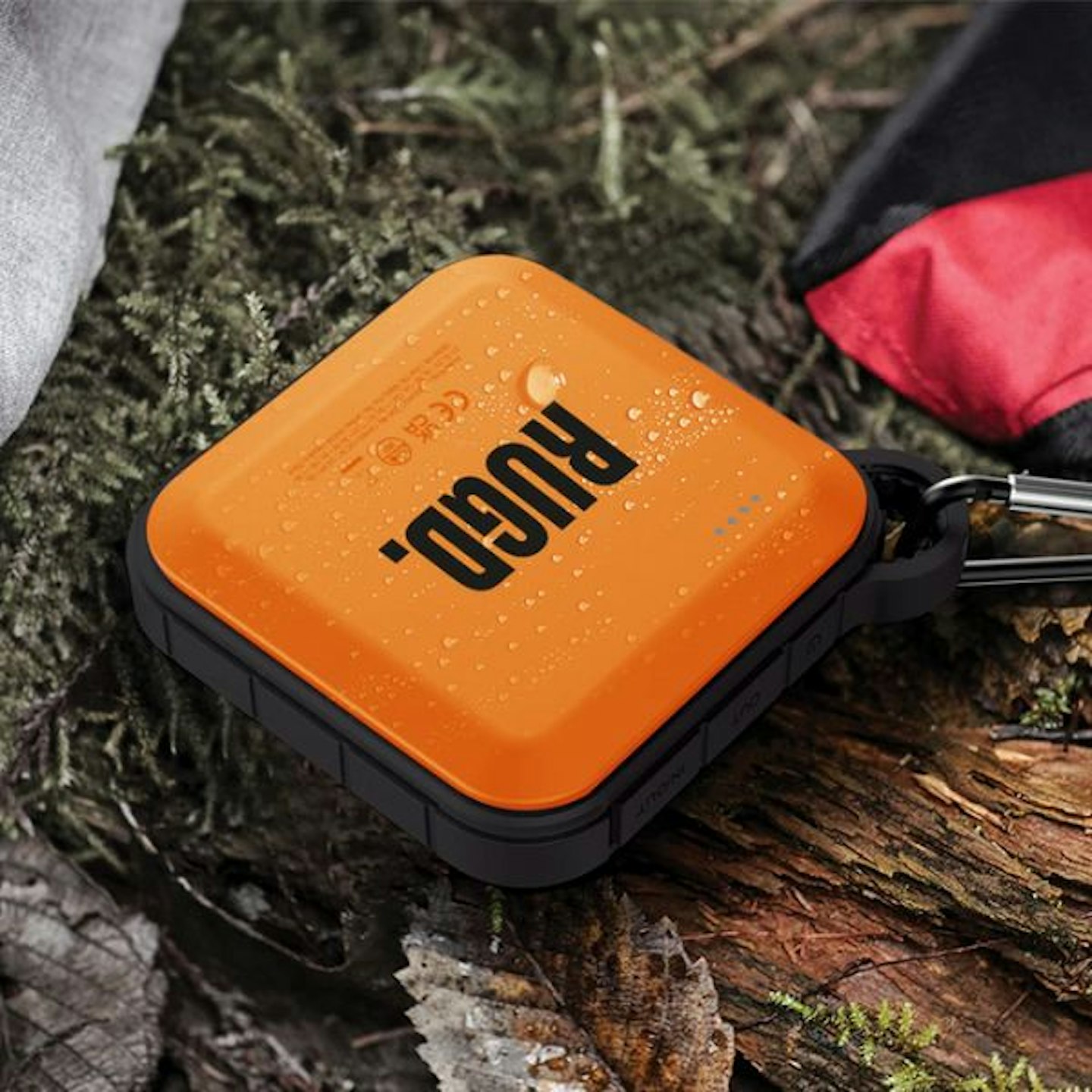
Description
Goal Zero offers a smaller sibling to its Venture 75 but the RUGD. Power Brick is the better option because it’s smaller, lighter, and has a marginally larger capacity, while being just as tough.
We appreciate that RUGD. is confident enough in its tough power bank to provide a carabiner with it and say you can clip it onto your pack, you don’t need to hide it in a pocket.
In terms of performance, there’s everything you need. There are USB-C and USB-A ports, with the former supporting Power Delivery for fast charging compatible devices. In addition, there is a very bright two-mode light that can be used as a night light or for SOS.
Pros
- Very tough
- Looks awesome
- Useful built-in light
Cons
- Not many different outputs
Prime day deal
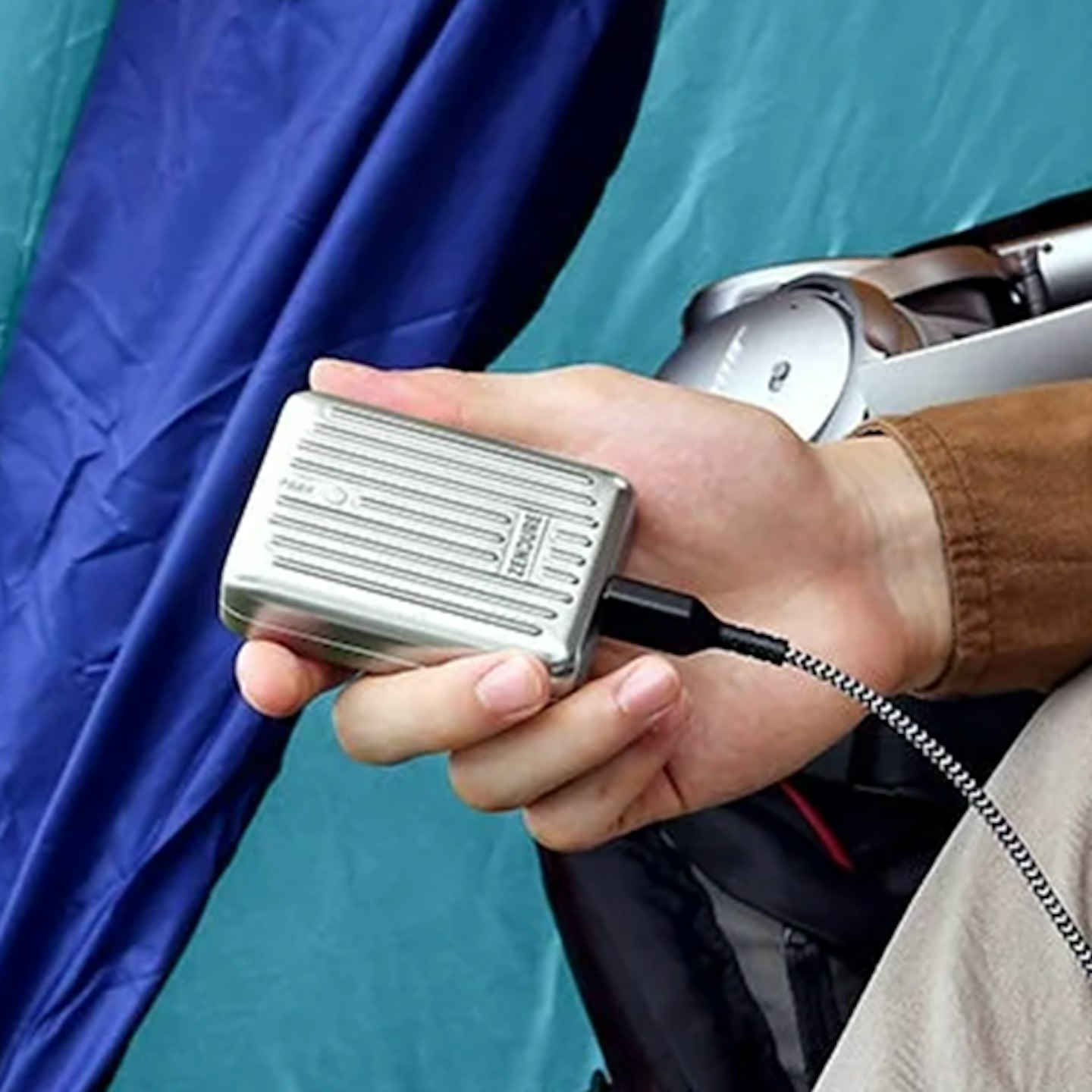
Description
SuperMini is indeed an apt name for this power bank. With its 10,000mAh capacity and footprint of a credit card, this power bank is hard to beat in that regard. Like the rugged power banks above, the SuperMini provides fast charging via the USB-C port for compatible devices.
While it will fit almost anywhere, one of the obvious weak points with the SuperMini is its lack of ingress protection. It can still be used for your outdoor adventures, but you have to be careful with it. Still, this won't be too hard since the Supermini can be stashed inside most internal jacket pockets.
One aspect that intrigues us is the low-power charging function. You'd use this to recharge a smartwatch or set of Bluetooth earphones, or to simply ration how much power you're putting out of your campsite is juggling several small devices. A nifty feature that will protect the more delicate batteries in your digital arsenal.
Pros
- Lightweight
- Extremely small
- Can charge devices while being recharged
Cons
- Durability is a concern
Best Power Bank for Camping
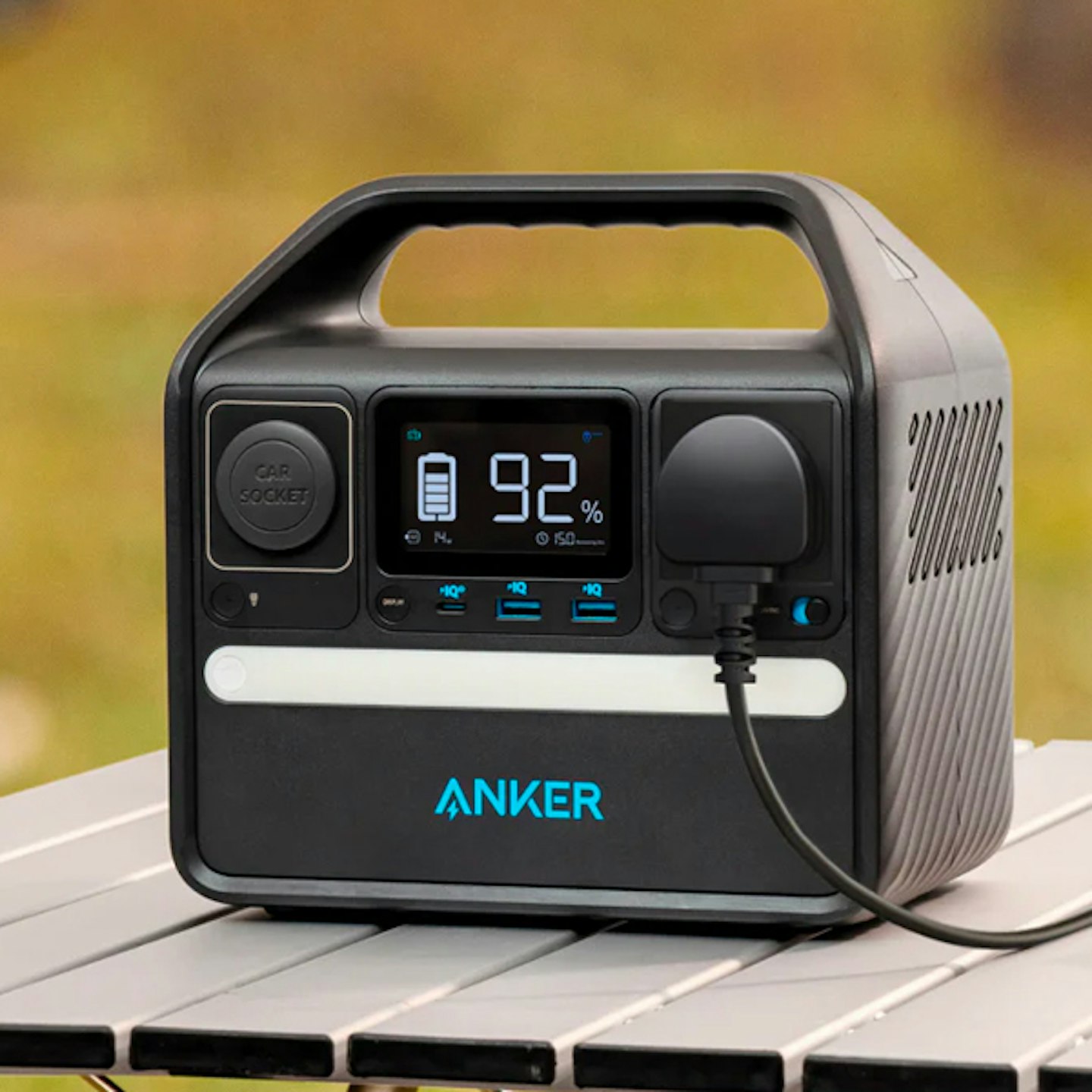
www.anker.com
Description
On the one hand, this thing is massive and probably quite silly to take on a hike. However, for what it provides, the Anker 521 Powerhouse is impressively lightweight and portable. It can sit unobtrusively in the corner of a tent, or you can pop it on a camp table and gather around it like cavemen discovering fire.
This is a high-power, high-capacity unit that we find exceptionally reliable for multi-day camping trips. Our favourite feature is the PowerHouse's smart LED display – this shows you exactly how much energy is left in the bank, as well as tracking power input and output to calculate how many hours of charge remain. This figure will change depending on which devices you have plugged in, which lets you manage your usage throughout your trip and ensure that you're never left unexpectedly powerless.
The huge range of outputs on this thing – including a UK mains port – means you can eschew the splitters and adapters that have become staples of most large group or family camping trips. The ability to keep laptops and camera batteries juiced up all weekend make this an ideal choice for any photographers or video makers looking to capture, review, and edit on the go.
Pros
- Gigantic cell capacity
- AC outlet for larger devices
- Runs quietly
Cons
- Too big and heavy for hiking
Best power bank for ultralight hiking
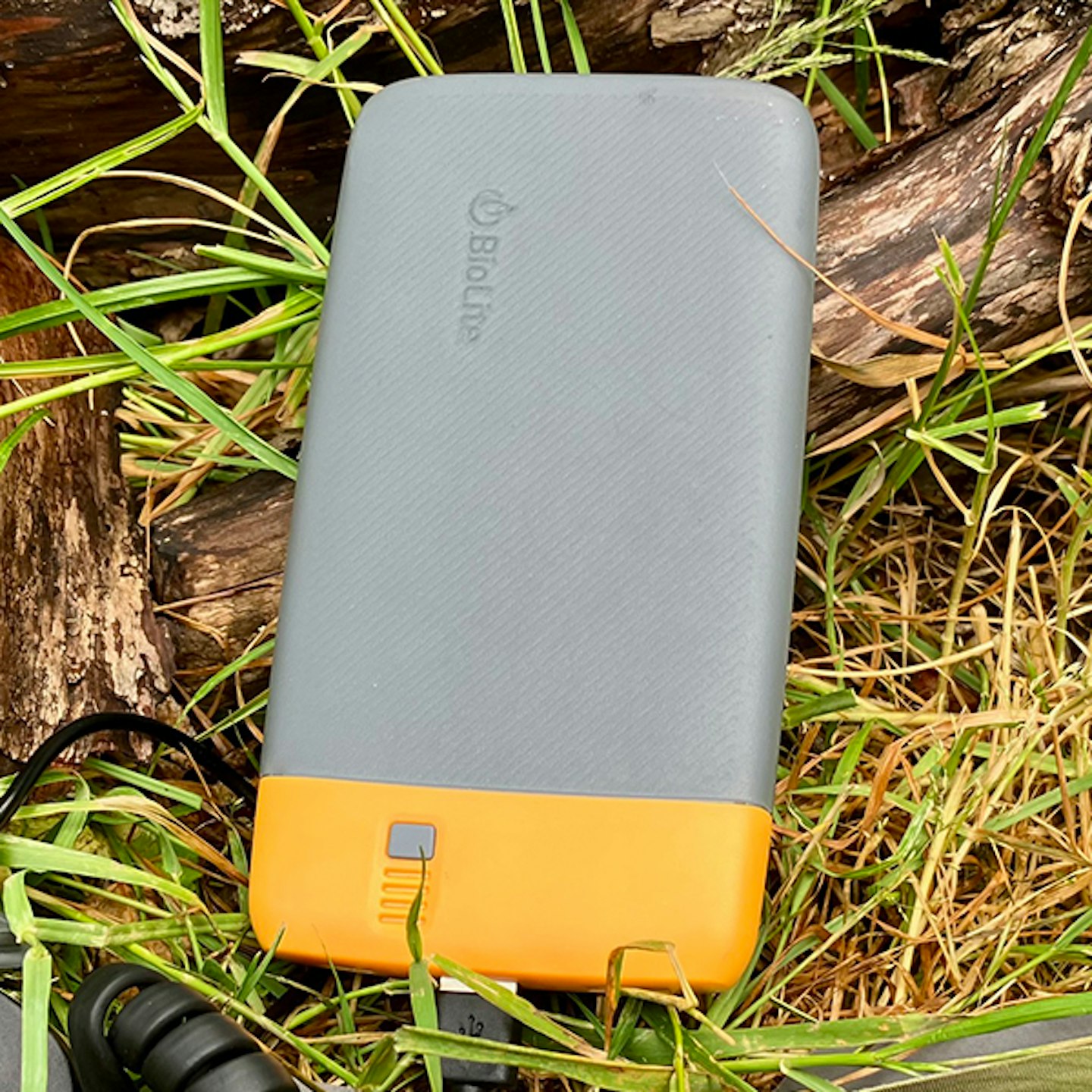
www.gooutdoors.co.uk
Description
Thanks to its 10,000mAh capacity, this power bank can charge the average smartphone battery 2.5 times and a headtorch 8 times, all while being pocket-sized and weighing in at 265g.
There are also other sizes available in the Biolite Charge range. So if you want something a bit lighter that you can slip into your first aid kit as a back-up then look at the Charge 20 PD (165g, 6,000mAh), and if you want a real workhorse that packs a bit more juice then check out the Charge 80 PD (465g, 20,000mAh).
The portable power bank charger market can be a tough one to navigate, because prices fluctuate wildly from bargain bucket to eye-wateringly expensive for what can often look like the same product. But we’ve been using this particular power bank for around 18 months now and it’s never let us down. It doesn’t claim to be indestructible or completely weatherproof, but the Biolite Charge 40 PD has proved plenty durable for us on day hikes and overnight expeditions. And even this mid-sized 10,000mAh version can fit easily into your trouser pocket to charge a phone on the go.
Verdict: Well priced, reliable and durable enough to rely on for most types of outdoor adventure. Biolite is a brand we love in general too, with a great range covering everything from headtorches and solar panels to stoves and firepits.
Pros
- Pocket-sized
- Relatively low weight
- Reliable charging
Cons
- Not fully weatherproof
How to recharge your power bank
The easiest and fastest way to recharge power banks is by the same means you would with a smartphone. However, away from mains power, options are limited.
Small, portable solar panels are a solution. 5- and 10-watt solar panels are small enough to take with you on a hike, and many of them can be strapped to your pack so they charge devices while you walk.
By no means do these solar chargers achieve the same performance as a standard plug, but they are useful for keeping devices topped up.
BioLite and Goal Zero produce some of the best lightweight and robust solar chargers around. For example, their 10-watt solar chargers weigh about half a kilogram and can charge power banks or devices directly via a cable.
Recommended

www.alpinetrek.co.uk
Recommended

www.alpinetrek.co.uk
What to look for in a power bank for hiking
Capacity: A smartphone requires between 2500 to 3500mAh to recharge. On this basis, a 10,000mAh power bank will provide about three recharges, for example. Consider how much you’re going to use your device(s) when on a hike and how much charge they demand. You can get more recharges of a headtorch from 5,000mAh than you can from a smartphone, for example.
Toughness: Power banks with decent ingress protection are always more suitable for outdoor endeavours, particularly for those who have a habit of being rough on their gear. However, it’s not strictly necessary. Regular power banks can be smaller and have more capacity, which is appealing, and you can pair them with a dry bag or case for protection. It comes down to personal preference.
Size: Cramming as much capacity into as small a size as possible is one of the ultimate goals of a power bank. Some brands are better at this than others, but it’s also important to remember that tough power banks with good IP ratings are never going to offer the power to weight ratio of regular power banks due to all that extra protection.
